For anybody trying to run an online business, having web pages that are slow to load can be one of the most harmful things to the success of a web-based enterprise. With download speeds for end-users growing all the time and new technologies such as fibre-optic becoming more common, there's very little tolerance for even the slightest delays.
You might not think it makes much difference, but when it comes to loading speeds, every second counts. A study reported last year by digital marketing resource Econsultancy showed three-quarters of people will abandon a web page that takes more than five seconds to load, while Google will start relegating pages in its rankings once they take more than 1.5 seconds to load.
Have the best servers
So what can you do to make sure this isn't a problem for your site? There are several steps you can take, but one of the most effective will be to ensure that your web servers are using the best technology available. Dedicated servers will be one way to do this, as this guarantees you won't be sharing your bandwidth with any other users, which could be vital at busy times.
Optimise your content
A recent article on advice website Business 2 Community noted another great way to improve the performance of your site is to look closely at the design and content of your pages. Usually, the root cause of slow-loaded pages was said to be traced either to the web server or the database server and, if it's the former that is causing the problem, the best way to tackle this is to reduce the load by removing the largest files.
For most web pages, these will typically be images. The publication stated: "The typical medium-sized website image is about 400 kilobytes - about 50 times as large [as a text-only page]. That means for every medium image on your site, your web server could serve 50 articles in roughly the same amount of time."
Obviously, cutting all image content from your site would leave you with a bland and uninteresting page, so there's no need to be drastic, but its important to find a balance between vibrant, engaging content and a streamlined, faster user experience.
Targeting images that are unnecessarily duplicated on your most popular pages is a good way to start, while if you don't want to get rid of pictures altogether, moving them to another server can be a great way to keep websites running quickly without compromising on content.
Cut down on add-ons
Another good step would be to remove content that requires plugins or other add-ons to work. These can be a major drain on websites where space is at a premium as they can be large resource hogs, reprioritising processes in order to deliver the best results, at the expense of your overall site, so this is something you need to think carefully about before adding them to a web page.

